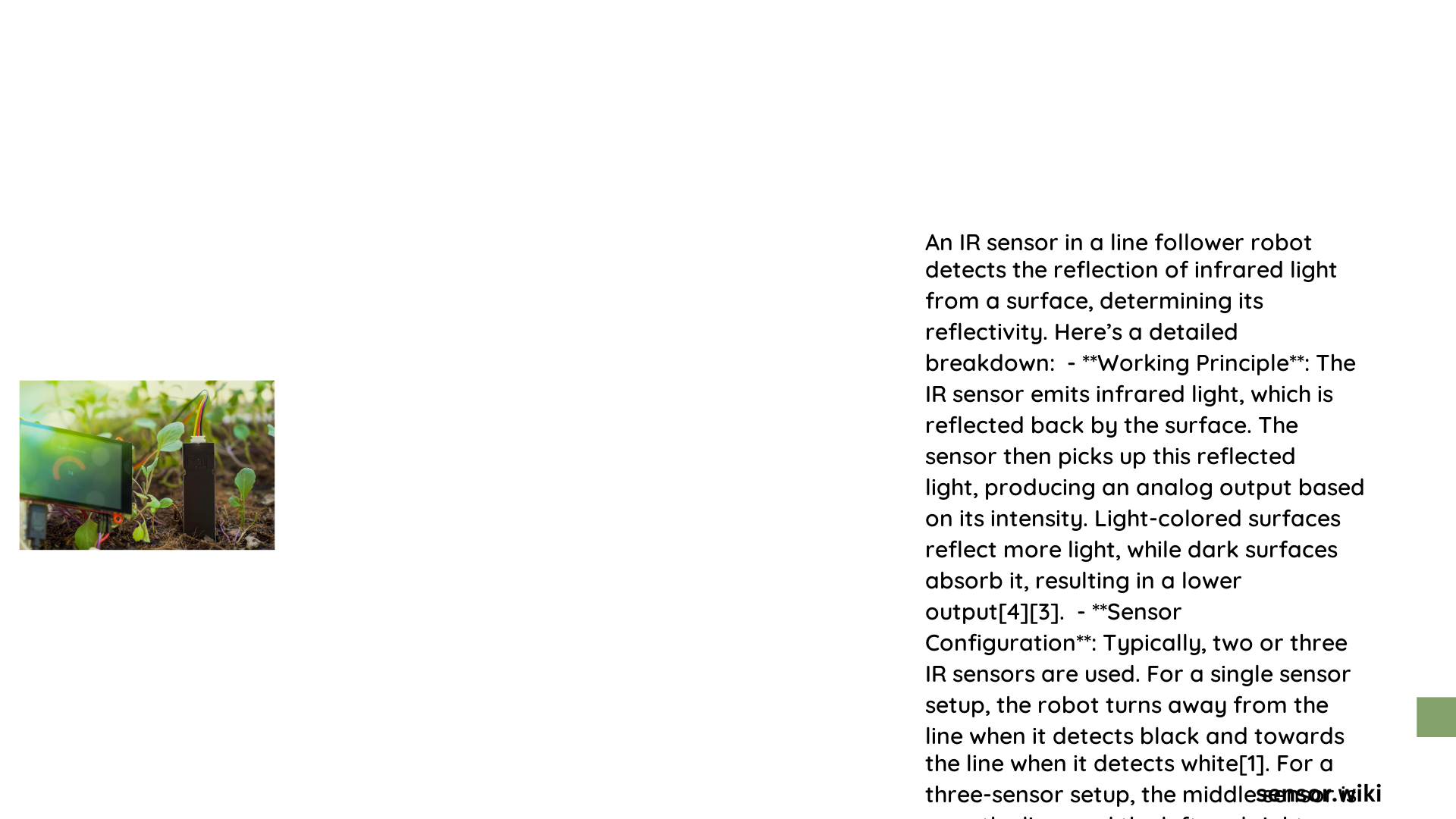Infrared (IR) sensors are critical components in line follower robots, enabling precise navigation by detecting surface color variations through advanced light reflection and absorption mechanisms. These sophisticated electronic sensors utilize infrared light emission and photodetection to track lines with remarkable accuracy, transforming robotic movement from simple mechanical motion to intelligent path following.
What Makes IR Sensors Essential for Line Follower Robots?
How Do IR Sensors Detect Surface Variations?
IR sensors operate on a fundamental principle of light interaction with surfaces. The sensor comprises two primary components:
- IR LED Transmitter
- Emits infrared light at 850-950 nanometers wavelength
- Directs light towards the surface beneath the robot
-
Generates consistent light emission
-
Photodiode Receiver
- Captures reflected infrared light
- Converts light intensity into electrical signals
- Differentiates between dark and light surfaces
| Surface Type | Light Behavior | Sensor Output |
|---|---|---|
| White Surface | High Reflection | High Voltage |
| Black Surface | Low Reflection | Low Voltage |
| Gray Surface | Partial Reflection | Intermediate Voltage |
What Are the Key Signal Processing Techniques?
Analog to Digital Conversion
- Microcontroller receives analog signals from photodiode
- Converts signals into digital binary values (0 or 1)
- Determines robot’s position relative to the line
Path Tracking Algorithms
- Compares sensor readings to predefined thresholds
- Adjusts motor speeds for precise line following
- Implements real-time correction mechanisms
How to Calibrate IR Sensors Effectively?

Calibration Considerations
- Optimal Sensor Distance: 5-10 mm from surface
- Surface Contrast: Clear black/white differentiation
- Environmental Adaptability: Minimize external light interference
Calibration Steps
- Position robot on reference surface
- Adjust potentiometer settings
- Test sensor response across different surfaces
- Fine-tune threshold values
What Factors Influence IR Sensor Performance?
Critical Performance Parameters
- Wavelength Range: 850-950 nanometers
- Detection Angle: 30-60 degrees
- Response Time: Microseconds
- Ambient Light Resistance
Potential Challenges
- Surface texture variations
- Inconsistent lighting conditions
- Sensor aging and degradation
How to Optimize IR Sensor Placement?
Strategic Positioning Techniques
- Use multiple sensors for enhanced accuracy
- Maintain consistent ground clearance
- Angle sensors for optimal light reflection
Recommended Configurations
- Two-Sensor Setup: Left and right line tracking
- Three-Sensor Setup: Center and side detection
- Servo-Mounted Sensor: Dynamic scanning approach
Advanced Implementation Strategies
Sensor Fusion Techniques
- Combine IR sensors with additional navigation technologies
- Implement machine learning algorithms
- Enhance robotic path-finding capabilities
Performance Optimization
- Use high-quality optical components
- Implement digital filtering
- Regular sensor calibration and maintenance
Practical Considerations
Selection Criteria
- Sensor sensitivity
- Response time
- Cost-effectiveness
- Environmental durability
Recommended Sensor Modules
- Sharp GP2Y0A21
- TCRT5000
- CNY70 reflective sensors
Conclusion
IR sensors represent a sophisticated solution for line follower robots, bridging the gap between mechanical movement and intelligent navigation. By understanding their intricate working principles, calibration techniques, and strategic implementation, robotics enthusiasts can develop more precise and responsive robotic systems.
Key Takeaways
- IR sensors detect surface variations through light reflection
- Precise calibration ensures accurate line tracking
- Multiple sensor configurations enhance navigation capabilities
References:
– Instructables: Line Follower Robot
– Mekathlon: Robotics Guide
– Opast Publishing: Robotic Principles
